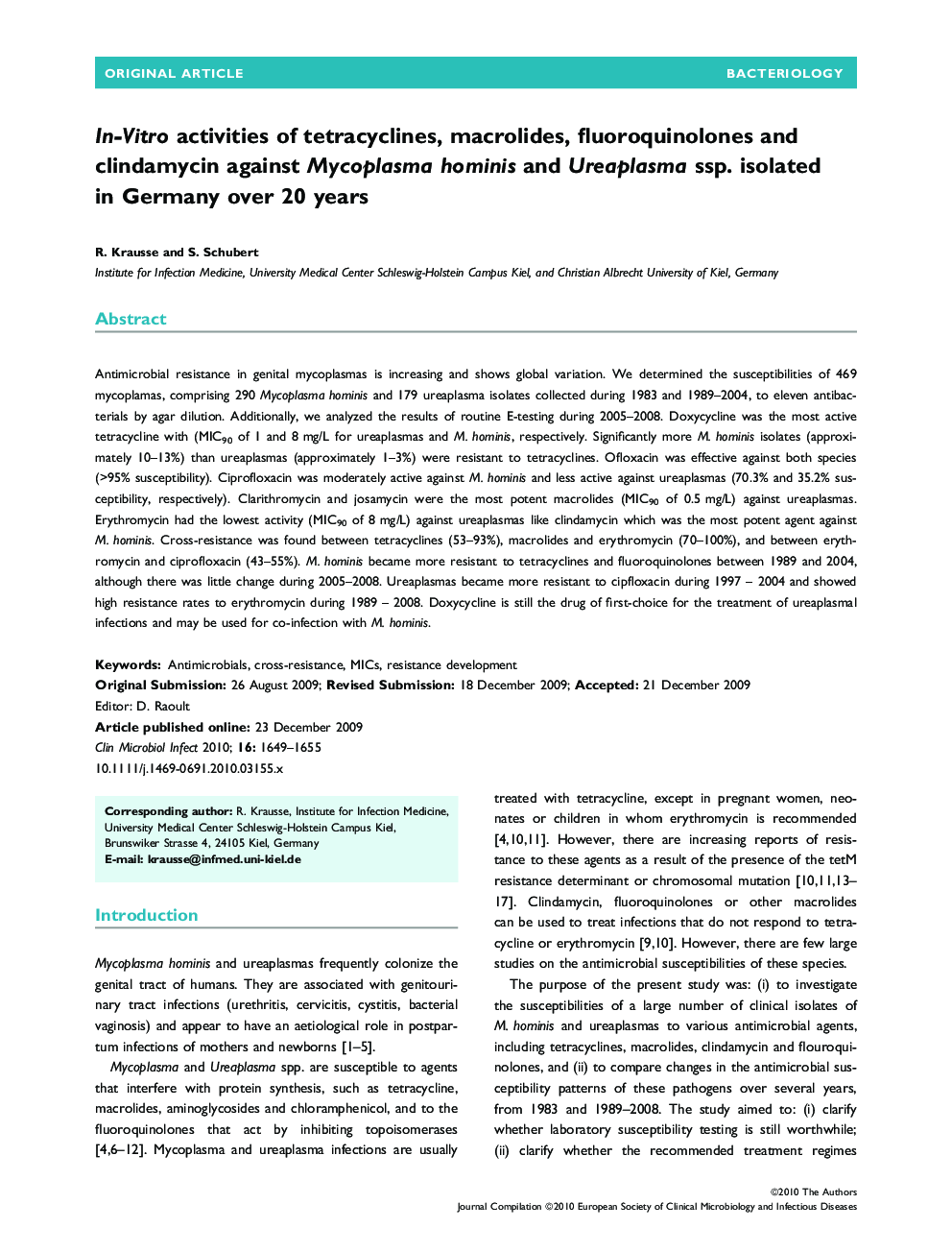| Article ID | Journal | Published Year | Pages | File Type |
|---|---|---|---|---|
| 6131276 | Clinical Microbiology and Infection | 2010 | 7 Pages |
Abstract
Antimicrobial resistance in genital mycoplasmas is increasing and shows global variation. We determined the susceptibilities of 469 mycoplamas, comprising 290 Mycoplasma hominis and 179 ureaplasma isolates collected during 1983 and 1989-2004, to eleven antibacterials by agar dilution. Additionally, we analyzed the results of routine E-testing during 2005-2008. Doxycycline was the most active tetracycline with (MIC90 of 1 and 8 mg/L for ureaplasmas and M. hominis, respectively. Significantly more M. hominis isolates (approximately 10-13%) than ureaplasmas (approximately 1-3%) were resistant to tetracyclines. Ofloxacin was effective against both species (>95% susceptibility). Ciprofloxacin was moderately active against M. hominis and less active against ureaplasmas (70.3% and 35.2% susceptibility, respectively). Clarithromycin and josamycin were the most potent macrolides (MIC90 of 0.5 mg/L) against ureaplasmas. Erythromycin had the lowest activity (MIC90 of 8 mg/L) against ureaplasmas like clindamycin which was the most potent agent against M. hominis. Cross-resistance was found between tetracyclines (53-93%), macrolides and erythromycin (70-100%), and between erythromycin and ciprofloxacin (43-55%). M. hominis became more resistant to tetracyclines and fluoroquinolones between 1989 and 2004, although there was little change during 2005-2008. Ureaplasmas became more resistant to cipfloxacin during 1997 - 2004 and showed high resistance rates to erythromycin during 1989 - 2008. Doxycycline is still the drug of first-choice for the treatment of ureaplasmal infections and may be used for co-infection with M. hominis.
Related Topics
Life Sciences
Immunology and Microbiology
Microbiology
Authors
R. Krausse, S. Schubert,
